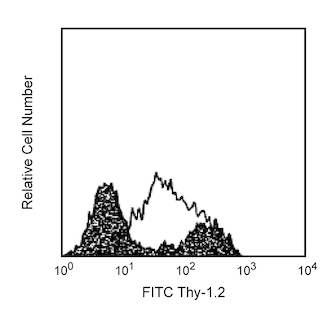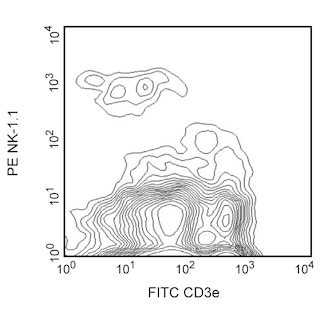-
Reagents
- Flow Cytometry Reagents
-
Western Blotting and Molecular Reagents
- Immunoassay Reagents
-
Single-Cell Multiomics Reagents
- BD® AbSeq Assay
- BD Rhapsody™ Accessory Kits
- BD® Single-Cell Multiplexing Kit
- BD Rhapsody™ Targeted mRNA Kits
- BD Rhapsody™ Whole Transcriptome Analysis (WTA) Amplification Kit
- BD Rhapsody™ TCR/BCR Profiling Assays for Human and Mouse
- BD® OMICS-Guard Sample Preservation Buffer
- BD Rhapsody™ ATAC-Seq Assays
-
Functional Assays
-
Microscopy and Imaging Reagents
-
Cell Preparation and Separation Reagents
-
Dehydrated Culture Media
-
- BD® AbSeq Assay
- BD Rhapsody™ Accessory Kits
- BD® Single-Cell Multiplexing Kit
- BD Rhapsody™ Targeted mRNA Kits
- BD Rhapsody™ Whole Transcriptome Analysis (WTA) Amplification Kit
- BD Rhapsody™ TCR/BCR Profiling Assays for Human and Mouse
- BD® OMICS-Guard Sample Preservation Buffer
- BD Rhapsody™ ATAC-Seq Assays
- Canada (English)
-
Change country/language
Old Browser
Looks like you're visiting us from {countryName}.
Would you like to stay on the current country site or be switched to your country?


.png)

Flow cytometric analysis of Ly-49G2 on mouse splenocytes. Splenocytes from C57BL/6 mice were stained with a PE Mouse Anti-Mouse NK1.1 antibody (Cat. No. 553165) in conjunction with either the PE-Cy™7 Rat Anti-Mouse Ly-49G2 antibody (right panel) or with a PE-Cy™7 Rat IgG2a, κ isotype control (left panel). Dot plots were derived from gated events based on light scattering characteristics for splenocytes. Flow cytometry was performed on a BD™ LSR II flow cytometry system.
.png)

BD Pharmingen™ PE-Cy™7 Rat Anti-Mouse Ly-49G2
.png)
Regulatory Status Legend
Any use of products other than the permitted use without the express written authorization of Becton, Dickinson and Company is strictly prohibited.
Preparation And Storage
Product Notices
- Since applications vary, each investigator should titrate the reagent to obtain optimal results.
- An isotype control should be used at the same concentration as the antibody of interest.
- Warning: Some APC-Cy7 and PE-Cy7 conjugates show changes in their emission spectrum with prolonged exposure to formaldehyde. If you are unable to analyze fixed samples within four hours, we recommend that you use BD™ Stabilizing Fixative (Cat. No. 338036).
- Please observe the following precautions: Absorption of visible light can significantly alter the energy transfer occurring in any tandem fluorochrome conjugate; therefore, we recommend that special precautions be taken (such as wrapping vials, tubes, or racks in aluminum foil) to prevent exposure of conjugated reagents, including cells stained with those reagents, to room illumination.
- Cy is a trademark of Amersham Biosciences Limited. This conjugated product is sold under license to the following patents: US Patent Nos. 5,486,616; 5,569,587; 5,569,766; 5,627,027.
- This product is subject to proprietary rights of Amersham Biosciences Corp. and Carnegie Mellon University and made and sold under license from Amersham Biosciences Corp. This product is licensed for sale only for research. It is not licensed for any other use. If you require a commercial license to use this product and do not have one return this material, unopened to BD Biosciences, 10975 Torreyana Rd, San Diego, CA 92121 and any money paid for the material will be refunded.
- PE-Cy7 is a tandem fluorochrome composed of R-phycoerythrin (PE), which is excited by 488-nm light and serves as an energy donor, coupled to the cyanine dye Cy7, which acts as an energy acceptor and fluoresces maximally at 780 nm. PE-Cy7 tandem fluorochrome emission is collected in a detector for fluorescence wavelengths of 750 nm and higher. Although every effort is made to minimize the lot-to-lot variation in the efficiency of the fluorochrome energy transfer, differences in the residual emission from PE may be observed. Therefore, we recommend that individual compensation controls be performed for every PE-Cy7 conjugate. PE-Cy7 is optimized for use with a single argon ion laser emitting 488-nm light, and there is no significant overlap between PE-Cy7 and FITC emission spectra. When using dual-laser cytometers, which may directly excite both PE and Cy7, we recommend the use of cross-beam compensation during data acquisition or software compensation during data analysis.
- Caution: Sodium azide yields highly toxic hydrazoic acid under acidic conditions. Dilute azide compounds in running water before discarding to avoid accumulation of potentially explosive deposits in plumbing.
- For fluorochrome spectra and suitable instrument settings, please refer to our Multicolor Flow Cytometry web page at www.bdbiosciences.com/colors.
- Please refer to www.bdbiosciences.com/us/s/resources for technical protocols.
Companion Products

.png?imwidth=320)

The 4D11 antibody specifically recognizes Ly-49G2 (also known as LGL-1), an inhibitory receptor which is expressed on subsets of natural killer (NK) cells and DX5-positive T lymphocytes (NK-T cells) in all strains tested (e.g., AKR/N, BALB/c, C3H/HeJ, C57BL/6, CBA/J, DBA/2, SJL, 129) and on a population of memory CD8+ T lymphocytes in C57BL/6 mice. Cross-reaction of 4D11 antibody to Ly-49A[B6], Ly-49A[BALB], and Ly-49T[129/J] inhibitory receptors and Ly-49L[CBA/J] activating receptor has been reported. The proportion of NK-T cells expressing Ly-49A and Ly-49G2 is higher (2-5 fold) in thymus than in liver (immature and mature NK-T cells, respectively), and there is evidence that down-regulation of Ly-49 receptor expression is necessary for normal NK-T-cell development to occur. Most NK cells express a single allele of Ly-49A and/or Ly-49G2, although occasionally they may express more than one allele. The Ly-49 family of NK-cell receptors, members of the C-type lectin superfamily, are disulfide-linked type-II transmembrane protein homodimers with extracellular carbohydrate-recognition domains, which bind to MHC class I alloantigens. The Ly-49 family members are expressed independently, such that an individual NK or T cell may display more than one class of Ly-49 receptor homodimers. Binding of Ly-49G[B6]-expressing transfectants to H-2Dd+/H-2Ld+ ConA blasts has been demonstrated, and H-2D[d]-expressing target cells inhibit the lytic activity of Ly-49G2-expressing NK cells. The levels of the Ly-49 inhibitory receptors are down-regulated by their ligands in vivo, and the various levels of expression of a Ly-49 inhibitory receptor may affect the specificity of NK cells. Ly-49G2[+] NK cells are able to lyse target tumor cells expressing H-2[a] and H-2[b] MHC class I antigens in vitro, and they mediate allogeneic and hybrid resistance to H-2[b] bone marrow transplantation. The Ly-49A[BALB] and Ly-49A[B6] alloantigens bind to MHC class I antigens of the d and k haplotypes, and Ly-49A[+] IL-2-activated NK cells are unable to lyse target cells expressing H-2[d] and H-2[k]. In vitro studies suggest that the Ly-49G2 and Ly-49A receptors mediate negative regulation of NK-cell cytolytic activity via tyrosine phosphorylation of their ITIMs (Immunoreceptor Tyrosine-based Inhibitory Motifs). Ly-49T[129/J] has a unique ITIM sequence, and Ly-49T-transfected 293T (human kidney epithelial) cells do not bind soluble tetramers of any tested H-2 alloantigen (D[b], D[d], D[k], K[b], K[d], K[k], L[d]).

Development References (16)
-
Chang CS, Silver ET, Kane KP. Generation of a monoclonal antibody that recognizes a polymorphic epitope of C57BL/6 Ly-49G2. Hybridoma. 1999; 18(5):423-429. (Biology). View Reference
-
Coles MC, McMahon CW, Takizawa H, Raulet DH. Memory CD8 T lymphocytes express inhibitory MHC-specific Ly49 receptors. Eur J Immunol. 2000; 30(1):236-244. (Biology). View Reference
-
Hanke T, Takizawa H, McMahon CW, et al. Direct assessment of MHC class I binding by seven Ly49 inhibitory NK cell receptors. Immunity. 1999; 11(1):67-77. (Biology). View Reference
-
Held W, Kunz B. An allele-specific, stochastic gene expression process controls the expression of multiple Ly49 family genes and generates a diverse, MHC-specific NK cell receptor repertoire. Eur J Immunol. 1998; 28(8):2407-2416. (Biology). View Reference
-
Hoglund P, Sundback J, Olsson-Alheim MY, et al. Host MHC class I gene control of NK-cell specificity in the mouse. Immunol Rev. 1997; 155:11-28. (Biology). View Reference
-
Makrigiannis AP, Etzler J, Winkler-Pickett R, Mason A, Ortaldo JR, Anderson SK. Identification of the Ly49L protein: evidence for activating counterparts to inhibitory Ly49 proteins. J Leukoc Biol. 2000; 68(5):765-771. (Biology). View Reference
-
Makrigiannis AP, Pau AT, Saleh A, Winkler-Pickett R, Ortaldo JR, Anderson SK. Class I MHC-binding characteristics of the 129/J Ly49 repertoire. J Immunol. 2001; 166(8):5034-5043. (Biology). View Reference
-
Mason LH, Ortaldo JR, Young HA, Kumar V, Bennett M, Anderson SK. Cloning and functional characteristics of murine large granular lymphocyte-1: a member of the Ly-49 gene family (Ly-49G2). J Exp Med. 1995; 182(2):293-303. (Biology). View Reference
-
Olsson-Alheim MY, Salcedo M, Ljunggren HG, Karre K, Sentman CL. NK cell receptor calibration: effects of MHC class I induction on killing by Ly49Ahigh and Ly49Alow NK cells. J Immunol. 1997; 159(7):3189-3194. (Biology). View Reference
-
Ortaldo JR, Mason AT, Winkler-Pickett R, Raziuddin A, Murphy WJ, Mason LH. Ly-49 receptor expression and functional analysis in multiple mouse strains. J Leukoc Biol. 1999; 66(3):512-520. (Biology). View Reference
-
Raulet DH, Held W, Correa I, Dorfman JR, Wu MF, Corral L. Specificity, tolerance and developmental regulation of natural killer cells defined by expression of class I-specific Ly49 receptors. Immunol Rev. 1997; 155:41-52. (Biology). View Reference
-
Raziuddin A, Longo DL, Mason L, Ortaldo JR, Bennett M, Murphy WJ. Differential effects of the rejection of bone marrow allografts by the depletion of activating versus inhibiting Ly-49 natural killer cell subsets. J Immunol. 1998; 160(1):87-94. (Biology). View Reference
-
Raziuddin A, Longo DL, Mason L, Ortaldo JR, Murphy WJ. Ly-49 G2+ NK cells are responsible for mediating the rejection of H-2b bone marrow allografts in mice. Int Immunol. 1996; 8(12):1833-1839. (Biology). View Reference
-
Robson MacDonald H, Lees RK, Held W. Developmentally regulated extinction of Ly-49 receptor expression permits maturation and selection of NK1.1+ T cells. J Exp Med. 1998; 187(12):2109-2114. (Biology). View Reference
-
Skold M, Cardell S. Differential regulation of Ly49 expression on CD4+ and CD4-CD8- (double negative) NK1.1+ T cells. Eur J Immunol. 2000; 30(9):2488-2496. (Biology). View Reference
-
Takei F, Brennan J, Mager DL. The Ly-49 family: genes, proteins and recognition of class I MHC. Immunol Rev. 1997; 155:67-77. (Biology). View Reference
Please refer to Support Documents for Quality Certificates
Global - Refer to manufacturer's instructions for use and related User Manuals and Technical data sheets before using this products as described
Comparisons, where applicable, are made against older BD Technology, manual methods or are general performance claims. Comparisons are not made against non-BD technologies, unless otherwise noted.
For Research Use Only. Not for use in diagnostic or therapeutic procedures.
Report a Site Issue
This form is intended to help us improve our website experience. For other support, please visit our Contact Us page.